This website uses cookies so that we can provide you with the best user experience possible. Cookie information is stored in your browser and performs functions such as recognising you when you return to our website and helping our team to understand which sections of the website you find most interesting and useful.
Home Care In Winston-Salem, NC

They say that your golden years are the best years of your life. For most older Americans, that's how it should be - a time to relax, reflect, and live life in a familiar place. After all, senior citizens in the U.S. have worked tirelessly to build a better economy, serve their communities, and raise families.
However, as seniors grow older, completing daily tasks like showering and enjoying activities such as visiting the historic Historic Bethabara Park gets harder without someone by their side. Unfortunately, many older Americans aren't able to rely on their adult children for help. The reality in today's world is that family members do not have the skills or time to dedicate to caring for their parents. That's where Always Best Care Senior Services comes in.
Our in-home care services are for people who prefer to stay at home as they grow older but need ongoing care that family or friends cannot provide. More and more older adults prefer to live far away from long-term, institutionalized facilities and closer to the place where they feel most comfortable - their home. Home care in Winston-Salem, NC is a safe, effective way to give your loved ones the care they need when they need it the most.

 Home Care Services
Home Care Services
- Home Care in Winston-Salem, NC
- The Always Best Care Difference
- Types of In-home Care in Winston-Salem, NC
- Benefits of Home Care in Winston-Salem, NC
- Aging in Place: The Preferred Choice for Most Seniors
- Affordable Care Plans
- Compassionate Care. Trusted Caregivers
- Assisted Living Referral Services
- Taking the First Step with Always Best Care
 Service Areas
Service Areas
The Always Best Care Difference
Since 1996, Always Best Care has provided non-medical in-home care for seniors to help them maintain a healthy lifestyle as they get older. We are proud to have helped more than 25,000 seniors maintain higher levels of dignity and respect. We focus on providing seniors with the highest level of in-home care available so that they may live happily and independently.
Unlike some senior care companies, we genuinely want to be included in our clients' lives. We believe that personalized care is always the better option over a "one size fits all" approach. To make sure our senior clients receive the best care possible, we pair them with compassionate caregivers who understand their unique needs. That way, they may provide care accordingly without compromising their wellbeing.
The Always Best Care difference lies in life's little moments - where compassionate care and trustworthy experience come together to help seniors live a fruitful, healthy life. Whether you are an aging adult that can't quite keep up with life's daily tasks or the child of a senior who needs regular in-home services, Always Best Care is here to help.
“Looking for a placement is always difficult for a family. Contacting Sandy to help was”
“I have been working for ABC for two years now, and I am very grateful”
“Such a wonderful place to work! Caregivers that genuinely care with office support that go”
“I bn with this company for Abt a year and I love working for them”
“I cannot say enough good things about this company and the caregivers they provided after”
“This company is TOP-NOTCH! Incredibly helpful and super friendly. If you’re looking for a part-time”
“Sandy is very knowledgeable of assisted living options in the Winston Salem area. She helped”
“I highly recommend Sandy Bowen with Always Best Care. I called her with a very”
“The staff and caretakers are wonderful. Would absolutely recommend to anyone who needs at home”
“These folks are so helpful! They care about their clients and it shows in the”
“The staff and caretakers are wonderful. Would absolutely recommend to anyone who needs at home”
“During an unexpected hospital stay, Joanne provided much needed assistance. She provided excellent care and”
“If you are looking for attentive, quality home care look no further than Joanne and”
“Looking for a placement is always difficult for a family. Contacting Sandy to help was the best option. She was familiar with all assisted living/memory care facilities around town and was quick to respond to the family with tours. She delivered FL2 forms to physician's and made the transition an easy process. I recommend Sandy 100 % for any family needing a smaller community for their elderly family member.”
“I have been working for ABC for two years now, and I am very grateful for my position. The staff are acceptable, the clients are lovely, and the environments are professional. I highly recommend PCAs and CNAs to apply.”
“Such a wonderful place to work! Caregivers that genuinely care with office support that go above and beyond for staff/clients. Highly recommend for employment and senior in-home care support.”
“I bn with this company for Abt a year and I love working for them . They work with you,they care about ur personal life/ problems, really good at matching you with good clients..”
“I cannot say enough good things about this company and the caregivers they provided after my mom's recent accident and stay in a rehab facility. The staff were constantly in communication with us keeping us abreast of any little or big updates. Their attitudes were always helpful and they seemed to genuinely care. The caregivers they sent to sit with and take care of mom were EXCELLENT. I'm not sure how many different caregivers she had over the few weeks of her stay but there wasn't a single one that wasn't kind and extremely helpful. It took a tremendous load off of everyone in our family knowing that she was being well cared for when we couldn't be there. Thank you to Brandi, Joanne, Gina, and anyone I'm missing for everything you all did for us from the beginning of the process all the way to my mom's release today. Hopefully, we won't need your services again, but if we do, I know who I will be calling!”
“This company is TOP-NOTCH! Incredibly helpful and super friendly. If you’re looking for a part-time in caregiving, this is it! ⭐️⭐️⭐️⭐️⭐️”
“Sandy is very knowledgeable of assisted living options in the Winston Salem area. She helped with a family member’s search with care and consideration. We highly recommend.”
“I highly recommend Sandy Bowen with Always Best Care. I called her with a very tight timeframe to find a suitable memory care facility for my family member. She asked a lot of questions about my loved one to try and get to know her as much as possible. She worked very fast and lined up several appointments for us to tour places within a matter of days. She explained the process to me every step of the way and made sure we stayed on track. She attended the appointments with me and asked questions that I would never think to ask. I can’t thank her enough.”
“The staff and caretakers are wonderful. Would absolutely recommend to anyone who needs at home care for themselves or loved ones”
“These folks are so helpful! They care about their clients and it shows in the service! I highly recommend ????”
“The staff and caretakers are wonderful. Would absolutely recommend to anyone who needs at home care for themselves or loved ones”
“During an unexpected hospital stay, Joanne provided much needed assistance. She provided excellent care and supportive advocacy. It made dealing with the discomfort more bearable and gave me a safeguard to decipher the complicated choices to resolve health issues. I highly recommend this service.”
“If you are looking for attentive, quality home care look no further than Joanne and her team. A passion for excellence is driven for from this team. Family oriented and willing to work with all families.”
What is Non-Medical Senior Care in Winston-Salem, NC?

Home is where the heart is. While that saying can sound a tad cliche, it is especially true for many seniors living in America. When given a choice, older adults most often prefer to grow older at home. An AARP study found that three out of four adults over the age of 50 want to stay in their homes and communities as they age.

When you begin to think about why, it makes sense. Home offers a sense of security, comfort, and familiarity.

The truth is, as we age, we begin to rely on others for help. When a family is too busy or lives too far away to fulfill this role, in-home senior care is often the best solution. Home care services allow seniors to enjoy personal independence while also receiving trustworthy assistance from a trained caregiver.

At Always Best Care, we offer a comprehensive range of home care services to help seniors stay healthy while they get the help they need to remain independent. As your senior loved one gets older, giving them the gift of senior care is one of the best ways to show your love, even if you live far away.

Types of Elderly Care in Winston-Salem, NC
To give our senior clients the best care possible, we offer a full spectrum of in-home care services:

Personal Care Services
If your senior loved one has specific care needs, our personal care services are a great choice to consider. Personal care includes the standard caregiving duties associated with companion care and includes help with tasks such as dressing and grooming. Personal care can also help individuals with chronic conditions like diabetes.
Common personal care services include assistance with:
- Eating
- Mobility Issues
- Incontinence
- Bathing
- Dressing
- Grooming


Home Helper Services
Sometimes, seniors need helpful reminders to maintain a high quality of life at home. If you or your senior has trouble with everyday tasks like cooking, our home helper services will be very beneficial.
Common home helper care services include assistance with:
- Medication Reminders
- Meal Preparation
- Pet Care
- Prescription Refills
- Morning Wake-Up
- Walking
- Reading


Companionship Services
Using this kind of care is a fantastic way to make life easier for you or your senior loved one. At Always Best Care, our talented caregivers often fill the role of a companion for seniors. That way, older adults can enjoy their favorite local activities, such as visiting Bailey Park with friends while also receiving the care they need daily or weekly.
Common companionship services include:
- Grocery Shopping
- Transportation to Appointments
- Nutritional Assistance
- Conversation
- Planning Outings
- Completing Errands
- Transportation to Community
- Events and Social Outings


Respite Care Services
According to AARP, more than 53 million adults living in the U.S. provide care to someone over 50 years old. Unfortunately, these caregivers experience stress, exhaustion, and even depression. Our respite care services help family caregivers address urgent obligations, spend time with their children, and enjoy nearby activities. Perhaps more importantly, respite care gives family members time to recharge and regroup. Taking personal time to de-stress reduces the risk of caregiver burnout. So, if you've always wanted to eat at the local The Downtown Grille or visit Old Salem Museums Gardens, don't feel bad. Doing so is great for both you and your loved one.
At the end of the day, our goal is to become a valuable part of your senior's daily routine. That way, we may help give them the highest quality of life possible. We know that staying at home is important for your loved one, and we are here to help make sure that is possible.
If you have been on the fence about non-medical home care, there has never been a better time than now to give your senior the care, assistance, and companionship they deserve.

Benefits of Home Care in Winston-Salem, NC
Always Best Care in-home services are for older adults who prefer to stay at home but need ongoing care that friends and family cannot provide. In-home care is a safe, effective way for seniors to age gracefully in a familiar place and live independent, non-institutionalized lives. The benefits of non-medical home care are numerous. Here are just a few reasons to consider senior care services from Always Best Care:
Always Best Care offers a full array of care options for patients at all levels of health. With our trusted elderly care services, your loved one will receive the level of care necessary for them to enjoy the highest possible quality of life.
Request More Information
Aging in Place: The Preferred Choice for Most Seniors
While it's true that some seniors have complicated medical needs that prevent them from staying at home, aging in place is often the best arrangement for seniors and their families. With a trusted caregiver, seniors have the opportunity to live with a sense of dignity and do so as they see fit - something that is unavailable to many older people today.
In-home care makes it possible for millions of seniors to age in place every year. Rather than moving to a strange nursing home, seniors have the chance to stay at home where they feel the happiest and most comfortable.
Here are just a few of the reasons why older men and women prefer to age at home:
How much does a senior's home truly mean to them?
A study published by the American Society on Aging found that more than half of seniors say their home's emotional value means more than how much their home is worth in monetary value. It stands to reason, then, that a senior's home is where they want to grow old.
With the help of elderly care in Winston-Salem, NC, seniors don't have to age in a sterilized care facility. Instead, they can age gracefully in the place they want to be most: their home. In contrast, seniors who move to a long-term care facility must adapt to new environments, new people, and new systems that the facility implements. At this stage in life, this kind of drastic change can be more harmful than helpful.
Institutional care facilities like nursing homes often put large groups of people together to live in one location. On any given day, dozens of staff members and caregivers run in and out of these facilities. Being around so many new people in a relatively small living environment can be dangerous for a seniors' health and wellbeing. When you consider that thousands of seniors passed away in nursing homes during the COVID-19 pandemic, opting for in-home care is often a safer, healthier choice for seniors.
Aging in place has been shown to improve seniors' quality of life, which helps boost physical health and also helps insulate them from viral and bacterial risks found in elderly living facilities.
For many seniors, the ability to live independently with assistance from a caregiver is a priceless option. With in-home care, seniors experience a higher level of independence and freedom - much more so than in other settings like a nursing home. When a senior has the chance to age in place, they get to live life on their own terms, inside the house that they helped make into a home. More independence means more control over their personal lives, too, which leads to increased levels of fulfillment, happiness, and personal gratification. Over time, these positive feelings can manifest into a healthier, longer life.
More independence, a healthier life, and increased comfort are only a few benefits of aging in place. You have to take into consideration the role of cost and convenience. Simply put, it's usually easier and more affordable to help seniors age in place than it is to move them into an institutional care facility. According to the US Department of Housing and Urban Development, seniors who age in the comfort of their homes can save thousands of dollars per month.
In-home care services from Always Best Care, for instance, are often less expensive than long-term solutions, which can cost upwards of six figures per year. To make matters worse, many residential care facilities are reluctant to accept long-term care insurance and other types of payment assistance.
With Always Best Care's home care services, seniors and their families have a greater level of control over their care plans. In-home care gives seniors the chance to form a bond with a trusted caregiver and also receive unmatched care that is catered to their needs. In long-term care facilities, seniors and their loved ones have much less control over their care plan and have less of a say in who provides their care.

Affordable Care
In-home care is a valuable resource that empowers seniors to age in place on their own terms. However, a big concern for many families and their loved ones is how much in-home care costs. If you're worried that in-home care is too expensive, you may be pleasantly surprised to learn that it is one of the most affordable senior care arrangements available.
Typically, hiring an Always Best Care in-home caregiver for a few hours a week is more affordable than sending your loved one to a long-term care facility. This is true even for seniors with more complex care needs.
At Always Best Care, we will work closely with you and your family to develop a Care Plan that not only meets your care needs, but your budget requirements, too. Once we discover the level of care that you or your senior need, we develop an in-home care plan that you can afford.
In addition to our flexible care options, families should also consider the following resources to help offset potential home care costs:

Compassionate Care. Trusted Caregivers.
When you or your senior loved one needs assistance managing daily tasks at home, finding a qualified caregiver can be challenging. It takes a special kind of person to provide reliable care for your senior loved one. However, a caregiver's role involves more than meal preparation and medication reminders. Many seniors rely on their caregivers for companionship, too.
Our companion care services give seniors the chance to socialize in a safe environment and engage in activities at home. These important efforts boost morale and provide much-needed relief from repetitive daily routines. A one-on-one, engaging conversation can sharpen seniors' minds and give them something in which to be excited.
At Always Best Care, we only hire care providers that we would trust to care for our own loved ones. Our senior caregivers in Winston-Salem, NC understand how important it is to listen and communicate with their seniors. A seemingly small interaction, like a short hug goodbye, can make a major difference in a senior's day. Instead of battling against feelings of isolation, seniors begin to look forward to seeing their caregiver each week.
Understanding the nuances of senior care is just one of the reasons why our care providers are so great at their job.
Unlike some senior care companies, our caregivers must undergo extensive training before they work for Always Best Care. In addition, our caregivers receive ongoing training throughout the year. This training ensures that their standard of care matches up to the high standards we've come to expect. During this training, they will brush up on their communication skills, safety awareness, and symptom spotting. That way, your loved one receives the highest level of non-medical home care from day one.
Assisted Living Referral Services
While it's true that many seniors prefer to age at home, sometimes in-home care isn't the best fit. For those seniors and their families, choosing an assisted living facility makes more sense. Unfortunately, finding the optimal care facility is easier said than done in today's day and age. That's when Always Best Care's assisted living referral services begin to make a lot of sense.
Assisted living is a form of housing intended for seniors who require varying degrees of medical and personal attention. Accommodations may include single rooms, apartments, or shared living arrangements. Assisted living communities are typically designed to resemble a home-like environment and are physically constructed to encourage the independence of residents.

At assisted living communities, seniors receive help with daily activities such as bathing, dressing, and eating. They may also benefit from coordination of services with outside healthcare providers, and monitoring of resident activities to ensure their health, safety, and well-being. Caregivers who work at assisted living communities can also provide medication administration and personal care services for older adults.
Other services offered within assisted living communities can include some or all of the following:
- Housekeeping
- Laundry
- Recreational Activities
- Social Outings
- Emergency Medical Response
- Medication Monitoring
- Family Visitation
- Personal Care

At Always Best Care, our representatives can match your senior's emotional, physical, and financial needs with viable assisted living communities nearby. Results are based on comparative data, so you can select the best choice for you or your loved one.
Always Best Care works closely with local senior living communities to gain valuable knowledge that we then use to help seniors and their loved ones make informed decisions. This information can include basic care and rent, resident availability, and services provided. Because Always Best Care is compensated by these communities, we provide senior living referral services at no extra cost to you.
Some of the most popular assisted living communities to consider in our area include the following:
- Heritage Woods Senior Living
- Homestead Hills
- Mallard Ridge Assisted Living
- Brighton Gardens of WinstonSalem
- Arbor Ridge At Stanleyville
- Forest Heights Senior Living Community

For many seniors, moving into a senior living community revolves around how and when they want to make a transition to more involved care. Some seniors are more proactive about transitioning to independent living. Others choose to remain home until their care needs or other requirements are satisfied. Remember - our staff is here to help. Contact our office today to learn more about assisted living communities and how we can find a facility that exceeds your expectations.

Taking the First Step with Always Best Care
The first step in getting quality in-home care starts with a personal consultation with an experienced Always Best Care Care Coordinator. This initial consultation is crucial for our team to learn more about you or your elderly loved one to discover the level of care required. Topics of this consultation typically include:
A discussion of your needs and how our trained caregivers can offer assistance in the most effective way

A draft of your care plan, which includes highly detailed notes and a framework for the care that you or your senior will receive

Discuss payment options and help coordinate billing with your insurance provider

Our caregivers are trained to spot changes that clients exhibit, like mental and physical decline. As your trusted senior care company, we will constantly assess and update your Care Plan to meet any new emotional, intellectual, physical, and emotional needs.
If you have never considered in-home care before, we understand that you and your family may have concerns about your Care Plan and its Care Coordinator. To help give you peace of mind, know that every team member and caregiver must undergo comprehensive training before being assigned to a Care Plan.
At the end of the day, we only hire the best of the best at Always Best Care. Whether you need home care in Winston-Salem, NC 24-hours a day or only need a respite for a couple of hours, we are here to serve you.
When you're ready, we encourage you to contact your local Always Best Care representative to set up a Care Consultation. Our Care Coordinators would be happy to meet with you in person to get to know you better, discuss your needs, and help put together a personalized Care Plan specific to your needs.

Latest News in Winston-Salem, NC
Stunt by Winston-Salem State cheerleaders draws millions of viral views
Lisa O’Donnellhttps://journalnow.com/life-entertainment/local/events/article_ff8cf161-982f-44b6-9e23-0c6e65fbeb0e.html
A highly anticipated game between Winston-Salem State University and Virginia Union on Saturday raises many questions.Do the Rams have what it takes to knock off the two-time defending CIAA champions?Will quarterback Daylin Lee continue his hot streak?Will Winston-Salem State's cheerleaders revive a sideline stunt that generated millions of video views on social media last month?NeSheila Washington, the coach of the school's cheerleading squad, isn't tipping her hand on what Saturday's sideline performance will lo...
A highly anticipated game between Winston-Salem State University and Virginia Union on Saturday raises many questions.
Do the Rams have what it takes to knock off the two-time defending CIAA champions?
Will quarterback Daylin Lee continue his hot streak?
Will Winston-Salem State's cheerleaders revive a sideline stunt that generated millions of video views on social media last month?
NeSheila Washington, the coach of the school's cheerleading squad, isn't tipping her hand on what Saturday's sideline performance will look like, but she concedes that the stunt, a simulation of a football play, could be back by popular demand.
"I have a strange suspicion that this will become a tradition for Powerhouse," Washington said, referring to the name of the school's cheerleading squad.
'Football, I love it'
The stunt featured senior Sydney Sharpe tucking a football under her arm and marching downfield while held aloft by several members of Powerhouse. She stiff-arms several oncoming cheerleader tacklers, who fall backward into the arms of teammates.
Sharpe eventually dodges two more tacklers and crosses into the end zone for a touchdown.
Powerhouse didn't invent the football simulation stunt, but when cheerleaders saw a clip of another squad doing it, they decided to add it to their repertoire, with one key change.
In the clip they saw, a cheerleader threw the ball through the outstretched arms of the goalpost.
Sharpe immediately called that out. No one would intentionally throw the ball through the goalpost, she said.
Her father, Derrick Sharpe, is the football coach at Parkland High School.
She knows her stuff.
"Football, I love it," Sharpe said.
Sometimes her eyes wander to the field, and she has to remind herself to stay focused on cheering.
A four-year member of the Powerhouse, Sharpe is usually part of the crew that supports an airborne cheerleader during stunts, which are the more athletic and entertaining moves that cheerleaders often perform.
Sharpe has had a goal of being in the air for at least one stunt before graduation.
Given her love of football, the simulation stunt was a perfect fit, Washington said.
"She comes from a football family, so it was like, 'You're going in the air.' We had to make sure her dad was proud," Washington said.
Powerhouse practiced the stunt a few times. On Sept. 20 against Virginia State, it was showtime.
Sharpe's mom, Sherrell, sitting in the stands with her husband, Derrick, hit the play button on her phone as Sydney was lifted in the air.
Just a few seconds into the stunt, Powerhouse began to feel a buzz in the stadium.
"Sometimes, the crowd catches onto us late, but this was immediate. You saw football players looking back like, 'Hey, what's happening?'" Washington said.
Meanwhile, Sharpe, up in the air for the first time, exuded confidence.
"It was like, 'OK, I have no choice but to do this and have fun,'" she said.
The execution was flawless.
Video blew up
Soon after Sydney Sharpe crossed the goal line, her mom posted the video to her Facebook and Instagram pages. From there, social media did its thing, spreading this fun and joyful stunt around the globe.
About two hours after the game, the number of views had reached 10,000 and was still growing. As of Wednesday, Sherrell Sharpe reported she had 3.7 million views on her Facebook page and 2.5 million on her Instagram page. Other platforms, with her permission, picked up the post, amounting to an additional 12 million views.
Powerhouse members said the reaction to its latest viral moment was unexpected.
"I'm really surprised how much it blew up," said Aneya Spears, the head cheer captain.
Washington is happy for the exposure that it brings to her alma mater.
"You'll see in the comments, 'What school is this?'" Washington said. "That warms my heart. It's keeping Winston-Salem State on the map."
It also raises the bar a little higher for Powerhouse.
"Once you do something good," she said, "you have to live up to it."
Fayetteville Joins Raleigh, Charlotte, Durham, Winston-Salem, Asheville in Boosting North Carolina Tourism Industry as US Travel Industry Booms with New Visitor Spending Records
Tuhin Sarkarhttps://www.travelandtourworld.com/news/article/fayetteville-joins-raleigh-charlotte-durham-winston-salem-asheville-in-boosting-north-carolina-tourism-industry-as-us-travel-industry-booms-with-new-visitor-spending-records/
Fayetteville joins Raleigh, Charlotte, Durham, Winston-Salem, and Asheville in boosting North Carolina tourism industry with a surge that matches the US travel industry boom. Visitor spending records break barriers as Fayetteville joins Raleigh and Charlotte in shaping growth. Durham and Winston-Salem add strength, while Asheville continues to build on its unique appeal.The North Carolina tourism industry thrives because Fayetteville joins Raleigh, Charlotte, Durham, Winston-Salem, and Asheville in creating fresh demand. Hotels fill, ...
Fayetteville joins Raleigh, Charlotte, Durham, Winston-Salem, and Asheville in boosting North Carolina tourism industry with a surge that matches the US travel industry boom. Visitor spending records break barriers as Fayetteville joins Raleigh and Charlotte in shaping growth. Durham and Winston-Salem add strength, while Asheville continues to build on its unique appeal.
The North Carolina tourism industry thrives because Fayetteville joins Raleigh, Charlotte, Durham, Winston-Salem, and Asheville in creating fresh demand. Hotels fill, attractions flourish, and local jobs grow stronger.
As the US travel industry booms, the North Carolina tourism industry shines brighter. New visitor spending records prove that Fayetteville joins Raleigh, Charlotte, Durham, Winston-Salem, and Asheville as leaders. Together they show the power of growth, the value of resilience, and the promise of a booming US travel industry with unstoppable momentum and unmatched visitor spending success.
North Carolina’s cities have turned 2025 into a landmark year for tourism. Visitor spending soared past billions, jobs grew stronger, and hotels filled with millions of overnight stays. From Charlotte to Asheville, from Raleigh to Wilmington, the numbers reveal how each city has shaped a unique tourism story. Visitor dollars supported local jobs, created tax savings, and powered entire communities. The 2025 tourism statistics prove that North Carolina has not only recovered from the pandemic and hurricanes but is now building a stronger future for its travel economy.
Charlotte visitor spending breaks records
Charlotte remains the state’s leading tourism engine. Visitor spending reached $6.4 billion in 2024, a growth of more than nine per cent. This made Mecklenburg County the top market in North Carolina. Hotels saw major peaks in 2025, especially during key events. On two nights in June, driven by a major sporting event, occupancy rates surged above 81 and 90 per cent. This showed the power of event-led demand in filling hotels across the city. Charlotte’s strength lies not just in leisure but also in conventions, sports, and cultural gatherings that bring global attention.
Raleigh hotels lead overnight demand
Raleigh confirmed its position as the state’s second-largest tourism market. Wake County generated $3.5 billion in visitor spending in 2024, up nearly eight per cent. By mid-2025, hotels had already sold over 2.6 million rooms. Occupancy averaged 67.5 per cent, with average daily rates at $138 and revenue per room at $93. Major events continue to drive bookings, with 177 conferences and tournaments booked, securing more than 130,000 future room-nights. Raleigh’s mix of business travel, sports tourism, and cultural appeal has turned it into one of the most reliable growth markets in the Southeast.
Durham strengthens through steady growth
Durham’s visitor economy held steady with spending of more than $1.16 billion in 2024. Tax revenue from tourism reached $81.4 million, while nearly 7,700 jobs depended directly on tourism activity. Though detailed room-night data is licensed, the city’s tourism profile points to strength in research travel, university events, and conferences tied to Duke. The steady spending level shows resilience in a market that benefits from health sciences and global research connections. For Durham, tourism is about consistent, high-value visitors who bring more than leisure—it is about knowledge, innovation, and culture fueling the visitor economy.
Asheville recovers after storm impact
Asheville faced a tough year in 2024 after storms, but visitor spending still reached $2.7 billion, making Buncombe County the state’s third largest tourism market. In 2025, signs of recovery became clear. Hotels booked nearly 200,000 rooms in May, a figure higher than pre-pandemic levels. Group bookings soared by 40 per cent, showing how meetings and conventions are now driving stability. Even with projections of a nine per cent drop in lodging revenue, Asheville remains a resilient destination. Its mix of nature, arts, and food continues to attract millions, keeping it central to the state’s travel identity.
Greensboro rises with sports and events
Greensboro has cemented its role as a sports tourism hub. Visitor spending reached nearly $1.8 billion in 2024, up nearly seven per cent. Major events, from collegiate tournaments to concerts, filled hotels and restaurants across Guilford County. Though hotel room-night numbers are not released publicly, event-driven demand has pushed hotel revenues upward. Greensboro’s position in the Triad makes it a critical link in the state’s travel economy, offering easy access, affordable hotels, and event infrastructure that draws visitors from across the Southeast. Sports and family travel remain its strongest engines of growth.
Winston-Salem builds momentum
Winston-Salem showed strong recovery with visitor spending above $1 billion in 2024. Hotels reported more than 1.8 million room-nights sold, marking a ten per cent jump in hotel revenue. The city’s mix of history, arts, and innovation has attracted both leisure and business travellers. Events at the Benton Convention Center and local universities boosted bookings throughout the year. The growth shows how secondary cities in North Carolina are successfully leveraging regional strengths to capture tourism growth. Winston-Salem now represents a balanced model of cultural tourism and business events feeding local hotels and attractions.
Wilmington thrives on coastal demand
Wilmington and its beaches posted more than $1.13 billion in visitor spending in 2024, rising 1.5 per cent year on year. Hotel tax collections crossed $25 million, and 2025 revenues are trending even higher. Coastal tourism remains a bedrock of North Carolina’s economy, and Wilmington’s blend of beach travel, film culture, and history keeps it strong. The resilience of the destination highlights the ongoing draw of coastal getaways even amid global competition. Wilmington’s ability to sustain growth during shifting travel patterns proves its long-term appeal as one of the state’s most reliable visitor markets.
Fayetteville rebounds with strength
Fayetteville’s visitor economy surged to nearly $698 million in 2024, supporting almost 4,800 jobs and generating $176 million in income. Tax savings for residents reached $140 per person. In 2025, group bookings took off, with more than 12,000 group room-nights confirmed, a jump of over 160 per cent year on year. The city also invested heavily in marketing and workforce development, ensuring that the rebound reaches all parts of the community. Fayetteville demonstrates how mid-sized cities can achieve powerful tourism growth through events, military connections, and smart destination branding.
Chapel Hill leverages education and culture
Chapel Hill’s visitor spending topped $280 million in 2024. Though smaller in scale, its tourism value is rooted in the University of North Carolina, cultural heritage, and sports. The market remains strong thanks to steady visitation for education, healthcare, and family travel. While hotel figures are not public, the destination continues to benefit from year-round demand linked to campus life and research activity. Chapel Hill’s example shows that even modest-sized cities can play a vital role in the tourism network when they build on unique strengths like education and culture.
The wider impact on communities
Tourism across North Carolina brings much more than hotel bookings. In 2024 alone, tourism supported more than 230,000 jobs statewide. Local tax revenues exceeded $47 billion. Every household in the state saved hundreds of dollars in taxes thanks to visitor spending. For many counties, tourism is now the single largest driver of job growth. Cities like Charlotte, Raleigh, Asheville, and Wilmington lead with scale, but smaller counties are also gaining through niche tourism. Rural communities benefit from festivals, trails, and heritage tourism. The ripple effect of spending ensures that benefits reach across every community.
Why North Carolina’s growth matters globally
North Carolina’s tourism growth positions the state as a major competitor not just nationally but also globally. While international arrivals to the United States slowed in 2025, North Carolina cities held their ground by focusing on regional markets and domestic travellers. Events, natural attractions, and strong destination branding helped offset global weakness. With airlines expanding capacity into Charlotte Douglas International Airport and Raleigh-Durham International Airport, international recovery remains on the horizon. North Carolina’s combination of affordability, accessibility, and authentic experiences makes it competitive against destinations worldwide.
Challenges facing 2026 and beyond
Despite the strong results in US Tourism, challenges remain. Airline delays and limited capacity could slow further growth. Safety and weather risks remain a concern, particularly with hurricanes impacting coastal and mountain destinations. High hotel rates may discourage budget-conscious travellers. Global competition is increasing, with rival destinations offering cheaper visas and lower entry costs. North Carolina must continue to invest in marketing, infrastructure, and workforce training to stay competitive. By addressing these risks early, the state can ensure that the tourism growth of 2025 becomes a foundation for long-term success.
Conclusion North Carolina shapes a new tourism future
North Carolina’s tourism in 2025 tells a story of record visitor spending, strong hotel demand, and resilient growth across its cities. Charlotte, Raleigh, Asheville, Durham, Greensboro, Winston-Salem, Wilmington, Fayetteville, and Chapel Hill all contributed uniquely to this rebound. Tourism supported hundreds of thousands of jobs, saved residents tax dollars, and strengthened communities across the state. As challenges emerge, North Carolina has shown it can adapt, recover, and thrive. The future of travel in the state is built not only on numbers but on resilience, strategy, and community pride. The lessons from 2025 will shape an even stronger tourism economy for years to come.
WSSU MEN’S BASKETBALL ANNOUNCES 2025–26 SCHEDULE
Winston-Salem State Universityhttps://wssurams.com/news/2025/10/1/mens-basketball-wssu-mens-basketball-announces-2025-26-schedule.aspx
Winston-Salem, N.C. – The Winston-Salem State University men's basketball program has officially released its 2025–26 schedule, featuring a competitive slate of regional match ups, CIAA rivalries, and high-profile non-conference contests that will prepare the Rams for another run at the conference and NCAA postseason."I have always believed in putting together a tough and challenging non-conference schedule, which will get us ready for CIAA conference play and ready for the CIAA Tournament" said ...
Winston-Salem, N.C. – The Winston-Salem State University men's basketball program has officially released its 2025–26 schedule, featuring a competitive slate of regional match ups, CIAA rivalries, and high-profile non-conference contests that will prepare the Rams for another run at the conference and NCAA postseason.
"I have always believed in putting together a tough and challenging non-conference schedule, which will get us ready for CIAA conference play and ready for the CIAA Tournament" said head coach Corey Thompson. "Looking forward to a new exciting year and support from our Ramily"
The Rams open the season with a marquee exhibition contest at ACC powerhouse North Carolina on Oct. 29 in Chapel Hill.
WSSU begins official play Nov. 14–15 at the CIAA–PSAC Challenge in Ettrick, Va., taking on East Stroudsburg and Shepherd. The Rams return home Nov. 18 for their first official home game against Virginia University of Lynchburg (VUL) at the C.E. Gaines Center.
The non-conference slate also includes road trips to Wheeling University (Nov. 22), Mount Olive (Dec. 1), and CIAA rivals Bowie State (Dec. 13) and Lincoln (Dec. 15). Key home non-conference match ups include Barton (Nov. 29), South Carolina Central CC (Dec. 11), Mid-Atlantic Christian (Dec. 18), and Belmont Abbey on New Year's Eve.
Conference play begins in January, highlighted by rivalry games inside Gaines Center against Elizabeth City State (Jan. 10), Virginia State (Jan. 13), Johnson C. Smith (Jan. 29), Livingstone (Jan. 31), Fayetteville State (Feb. 7), Claflin (Feb. 12), and Shaw (Feb. 14). Road trips include Shaw (Jan. 17), Claflin (Jan. 21), Fayetteville State (Jan. 24), Johnson C. Smith (Feb. 18), and Livingstone (Feb. 21).
The Rams will also face Virginia Union on the road Feb. 4 before closing the regular season in preparation for the CIAA Basketball Tournament, which returns to CFG Bank Arena in Baltimore, Md., Feb. 24–28.
Winston-Salem State Women’s Basketball Unveils 2025-26 Schedule
Winston-Salem State Universityhttps://wssurams.com/news/2025/10/1/womens-basketball-winston-salem-state-womens-basketball-unveils-2025-26-schedule.aspx
WINSTON-SALEM, N.C. - The Winston-Salem State University women's basketball team is gearing up for an exciting 2025-26 campaign, highlighted by a challenging non-conference slate and a competitive CIAA schedule that will test the Rams from start to finish."We have a very competitive schedule for the 25-26 season that we believe will prepare us for Baltimore in February," said head coach Tierra Terry. "We are excited for the RAMILY to see our players hard work and passion on and off the court. Please come support us thi...
WINSTON-SALEM, N.C. - The Winston-Salem State University women's basketball team is gearing up for an exciting 2025-26 campaign, highlighted by a challenging non-conference slate and a competitive CIAA schedule that will test the Rams from start to finish.
"We have a very competitive schedule for the 25-26 season that we believe will prepare us for Baltimore in February," said head coach Tierra Terry. "We are excited for the RAMILY to see our players hard work and passion on and off the court. Please come support us this season!"
The Rams open the season officially tipping off at North Carolina A&T on November 16 in Greensboro.
The early schedule is filled with road challenges, including match ups against Converse (Nov. 19), Concord (Nov. 25), Barton (Nov. 29), and Lees-McRae (Dec. 1). WSSU will also host key non-conference games at the Gaines Center, including USC Aiken (Nov. 22) and Francis Marion (Dec. 11), before beginning CIAA play.
Conference action begins in mid-December with road trips to Bowie State (Dec. 13) and Lincoln (Dec. 15), followed by home contests against Mt. Olive (Dec. 20) and Virginia University of Lynchburg (Jan. 2).
The CIAA schedule will once again bring some of the league's toughest competition to Winston-Salem. The Rams' home conference slate features match ups against Elizabeth City State (Jan. 10), Virginia State (Jan. 13), Johnson C. Smith (Jan. 29), Livingstone (Jan. 31), Fayetteville State (Feb. 7), Claflin (Feb. 12), and Shaw (Feb. 14).
Road tests include trips to Shaw (Jan. 17), Claflin (Jan. 21), Fayetteville State (Jan. 24), Virginia Union (Feb. 4), Johnson C. Smith (Feb. 18), and Livingstone (Feb. 21).
The regular season builds toward the CIAA Tournament in Baltimore, MD, from February 22-28, where the Rams will look to make a strong push on championship week.
With a balanced mix of early non-conference battles, tough CIAA rivals, and plenty of action at the Gaines Center, the 2025-26 season promises to be one to watch for Rams fans.
NC State Opens ACC Play in Winston-Salem Against Wake Forest
North Carolina State Universityhttps://gopack.com/news/2025/9/11/football-nc-state-opens-acc-play-in-winston-salem-against-wake-forest
RALEIGH, N.C. - Meeting every year since 1910, NC State and Wake Forest meet once again Thursday night, opening ACC play at 7:30 p.m. in Winston-Salem on ESPN. The 119th game on Thursday makes this the longest continuous series in ACC history and the second-longest in the FBS.The Wolfpack will be looking to win just its fourth game in Winston-Salem since 2000 (2001,2015,2023). During that time, the Wolfpack has posted a 10-3 mark in games played at Carter-Finley, while going 3-9 in games played at Wake Fore...
RALEIGH, N.C. - Meeting every year since 1910, NC State and Wake Forest meet once again Thursday night, opening ACC play at 7:30 p.m. in Winston-Salem on ESPN. The 119th game on Thursday makes this the longest continuous series in ACC history and the second-longest in the FBS.
The Wolfpack will be looking to win just its fourth game in Winston-Salem since 2000 (2001,2015,2023). During that time, the Wolfpack has posted a 10-3 mark in games played at Carter-Finley, while going 3-9 in games played at Wake Forest.
The Wolfpack lead the all-time series 69-43-6, though Wake Forest won last year's meeting 34-30 in Raleigh. Six of the last eight meetings have been decided by 10 points or fewer.
The Pack's first two opponents have struggled once they enter the red zone. NC State ranks second in the ACC and 21st in the FBS in red zone defense, as the opponents have converted just .625 (5-8) of their trips into points, scoring just three touchdowns.
Wesley Grimes has played in two NC State vs. Wake Forest games in his career, but he's stood on different sidelines in each. Grimes spent his first two seasons at Wake Forest, playing in 19 games and starting three. He tied for the team lead in touchdown catches in 2023, scoring four times while hauling in 20 catches for 339 yards.
He hauled in one catch for nine yards for the Deacons in the Wolfpack's 2023 win in Winston-Salem and had four grabs for 46 yards in last year's NC State loss in Raleigh. In the '25 season opener, Grimes posted the best single-game totals of his collegiate career, hauling in four catches for 121 yards and a touchdown. His 48-yard touchdown reception in the contest was the longest of his career as well. He currently ranks 16th in the FBS in yards per reception with a 25.7 mark.
NC State has started the 2025 season 2-0 with two one-score wins. Since 2020, NC State has played in 31 one-score games (+/- 8 points). That ties as the fourth-highest tally in the FBS during that time frame.
Last week's win over Virginia marked the seventh time in the Dave Doeren era at NC State that multiple players rushed for multiple touchdowns in a single game. In the Pack's 35-31 win, QB CJ Bailey and RB Hollywood Smothers each rushed fora pair of TDs.
Disclaimer:


 336-654-5001
336-654-5001





